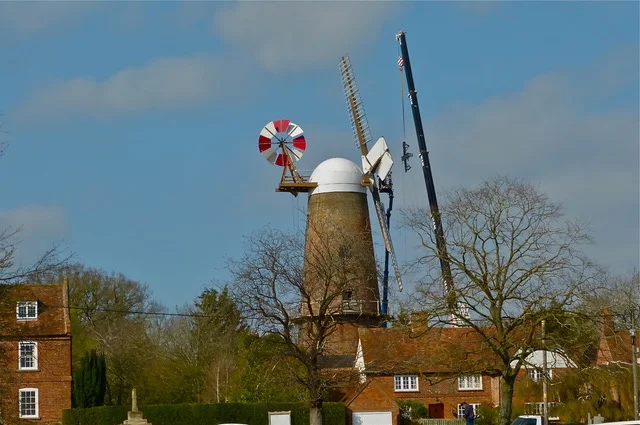Life in Quainton
Hibernation village!
We began our married life in Regents Park, London, in a beautiful but very small flat over looking the Regent canal. The zoo was not far away and we could hear the animals agitating to be fed.
With the arrival of our first child, Charlotte in 1968, the flat became too cramped and we started to look for a house out of London, as much as possible in a rural area but within commutable distance from London where I worked for Farmers Weekly. Buckinghamshire and Hertfordshire seemed ideal.
A friend drove us round the area and we were struck by Quainton, a small viillage 46 miles from London, set in grazing pastures and lying at the foot of a group of low hills. A small house was for sale below the village green and we snapped it up. Quainton is a lovely village, a population of about 1300, a 19th century windmill overlooking the village and a 15/16 century church linked to the Knight Hospitalers.
It is a peaceful place and at night almost silent. But this peacefulness has been threatened twice: first when we arrived by the plan to build London’s third airport a few miles away with Quainton lying in the flight path. This was defeated but the latest intrusion, HS2, will soon be with us and excavators are already gouging out the track which will run one mile south of the village.
There is an abundance of village societies: badminton, football, cubs and scouts, brownies and guides, allotments, the village (conservation) society, the drama group and many others.
Charlotte, Harriet who was born in 1969, Jocasta, born in 1972, and Cassandra, born in 1978, all attended the village school which provided an excellent grounding and they all made many local friends. Cassandra had a pony which was stabled behind the house and could ride through the village – safe at the time but now a risky venture as Quainton has become a rat-run for the surrounding village drivers heading for Aylesbury and Oxford.
In 1972 we moved to the Vine in Upper Street, an 18th century farm house much in need of attention but having great charm and we have remained here ever since. The garden has demanded more and more of my time and is a great source of pleasure.
We have been much involved in the parish church, another highly active organisation, and I have served for almost longer than I can remember as churchwarden. Two of our daughters were christened in the church and three were married there.
Our daughters used to describe Quainton as ‘hibernation’ village because of its ‘boring' calm, nevertheless they have all settled happily within easy reach of us.
In 1976 we set off for Dacca, Bangladesh, where I had been appointed as OXFAM’s Field Director. An exhilarating series of postings took us from Bangladesh to East Africa and finally back to England to run FARM from the UK office in London.
Despite many moves we have managed to keep together as a family and I think the stability we have achieved has been important to us all. During our overseas posting we came back to Quainton every year. Charlotte and Harriet went to boarding school in the UK for some of this time and finally all of them except Charlotte – who went on to Edinburgh University – attended Aylesbury High School.
Quainton’s windmill was built in 1832. It is a fine imposing structure rising 70ft above the village and visible for many miles across the Vale of Aylesbury. But despite its impressive appearance it failed to catch the wind sufficiently and a steam engine was brought in to provide supplementary power.
When we arrived in Quainton in the 1970s it had become a sad, derelict structure – one sail remained and elm trees had grown up around it. Eventually a determined effort was made to restore it. A team of volunteers worked tirelessly and eventually the sails began to turn and corn was once more ground and sold in the village store.
Sadly, the timber used was not up to the task, it was found to be rotten and the mill was closed once more. Eventually funds were raised – mostly from Colin Dancer, the generous mill owner, and a group of professional millwrights joined the volunteers to complete the work. The timber headframe was replaced and, in 2019, new sails constructed using a giant crane. However, the machinery within the mill was still in working order.
Standing within the mill when it is working is a great experience, it is almost as if it were a living creature. The building vibrates and the sails creak, a sound that carries though the village.
The mill is open to visitors on Sundays.
Photo credit: Bernard Hall
